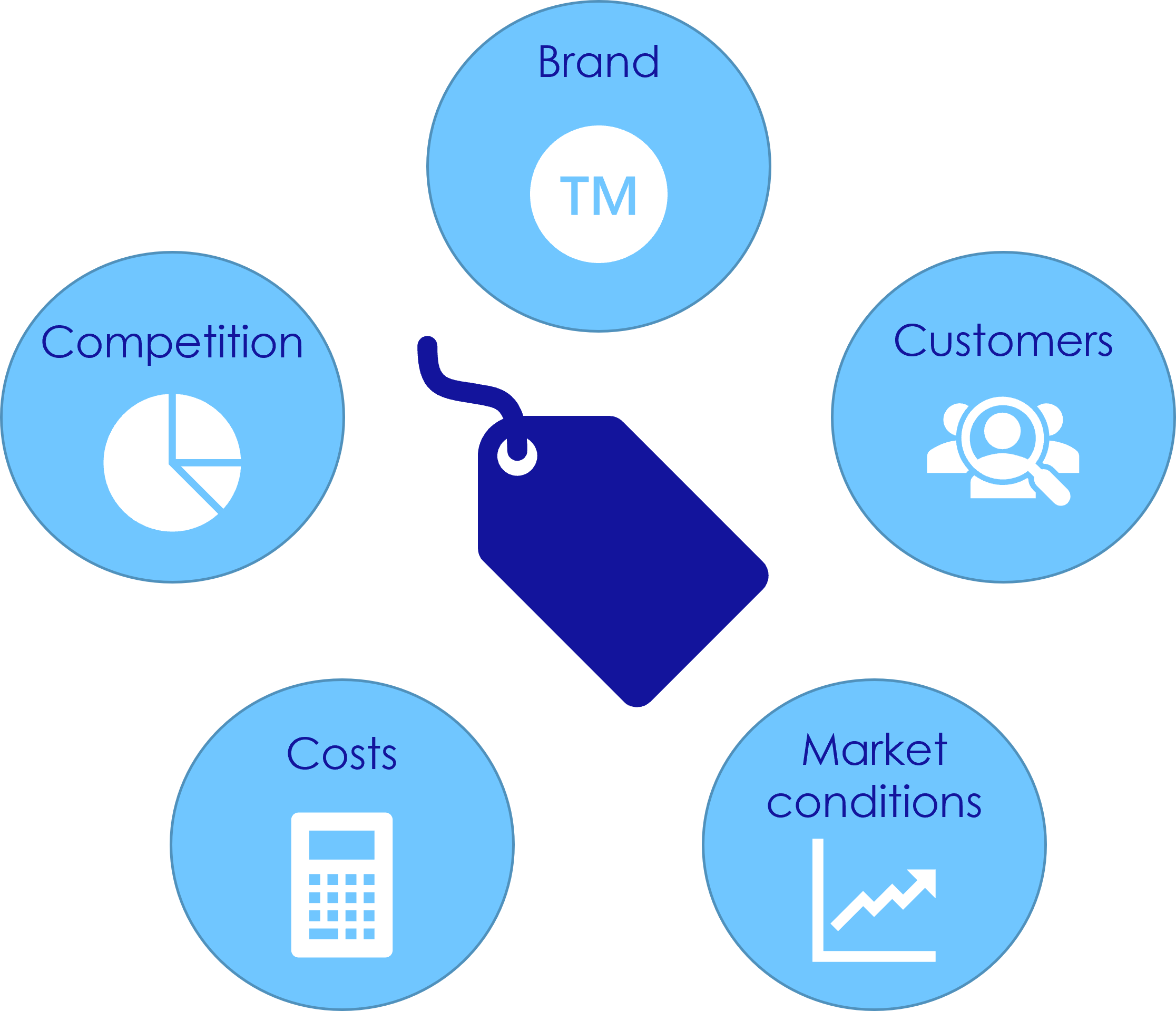Product Pricing....
When it comes to setting a product price, a number of things need to take into consideration.
You don’t want price yourself out of potential profits by charging too much. If you set your prices too low, you will lose out on profit.
Several aspects of your organisation, including revenue targets, marketing goals, audiences, brand positioning, and product features, contribute into developing a pricing strategy. The market and economic trends, as well as variables such as customer demand, competition prices, and other external factors, all have an impact.

A starting point…
It is easy to examine the cost of goods sold (COGS), think about the prices of similar items on the market, and adjust your selling price accordingly.
The cost of goods sold and industry competition are two key factors to consider, but they shouldn’t drive your price decisions.
The optimal pricing approach boosts earnings and sales. Pricing strategies:
- With value-based pricing, you set your prices according to what consumers think your product is worth
- When you use a competitive pricing strategy, you’re setting your prices based on what the competition is charging.
- If you set your prices as high as the market will possibly tolerate and then lower them over time, you’ll be using the price skimming strategy.
- Cost Plus Pricing -takes the product production cost and add a certain percentage to it.
- In highly competitive markets, it can be hard for new companies to get a foothold. One way some companies attempt to push new products is by offering prices that are much lower than the competition. This is penetration pricing.
- Economy Pricing is where you price a product cheaper than the competition and make the money back with increased volume.
- Dynamic Pricing is where the prices change in line with demand – this is commonly used in the travel market
As well as the basic price, you may also want to consider pricing tactics to increase revenue such as:
- Tactical pricing – used to drive additional sales and includes:
– Early booking discounts
– Permanent low season prices
– Sales promotions to sell empty seats / tickets (last minute)
– Group discounts +packages
– Graduated prices (less pp for more people)
– Promotional pricing - Upselling – increasing the quality (and the price) e.g. increase size
- Cross selling – recommending the purchase of complementary goods or services e.g. add fries
In summary
Think about pricing as more than just the cost of goods plus something for you. What is the value to the customer? How competitive are you? How can you make yourself more so?
Go beyond price and consider value!
And if you’d like to know more about how to develop long term customer relations – drop me a line to 07956 634 330 or email me.